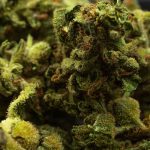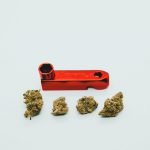Prague, the capital city of the Czech Republic, has a complex and fascinating history when it comes to the drug trade. From the 19th century to the present day, the city has been affected by various substances and trends, shaping its social, cultural, and economic landscape.
Early Years: Opium and Morphine
In the 19th century, opium and morphine were the primary substances used for medicinal and recreational purposes. The city’s proximity to the Austro-Hungarian Empire and its strategic location along trade routes made it a hub for the import and export of these substances.
- Opium was used to treat various ailments, including pain and insomnia.
- Morphine, a derivative of opium, was also widely used for its medicinal properties.
The Interwar Period: Cocaine and Heroin
Following World War I, Prague experienced a significant increase in the use of cocaine and heroin. These substances were often smuggled into the city from neighboring countries, including Germany and Austria.
- Cocaine was popular among the city’s elite and artistic communities.
- Heroin, on the other hand, was often used by those in lower socio-economic classes.
The Communist Era: Suppression and Black Market
Under communist rule, the Czech government implemented strict controls on the drug trade, leading to a thriving black market. Despite these efforts, substance use continued, with many turning to homemade or smuggled substances.
The city’s drug trade was characterized by a lack of access to legitimate substances, leading to a culture of DIY production and smuggling.
Post-Communist Era: New Trends and Challenges
With the fall of communism, Prague experienced an influx of new substances and trends, including the rise of ecstasy and other synthetic drugs. The city’s drug trade became more complex, with international organized crime groups playing a significant role.
Today, Prague continues to grapple with the challenges of the drug trade, from addiction and public health concerns to organized crime and social inequality.







I found this article to be incredibly informative and insightful into the complex history of the drug trade in Prague.
I was particularly fascinated by the section on the interwar period and how cocaine and heroin became popular among different socio-economic classes in Prague.
The author has done a fantastic job of highlighting the various trends and substances that have shaped Prague\
Overall, this article is a must-read for anyone interested in understanding the complex history and current challenges of the drug trade in Prague.
The article provides a balanced view of the drug trade in Prague and its impact on public health and addiction rates.
I appreciated how the author explored the role of international organized crime groups in the post-communist era and their influence on the city\